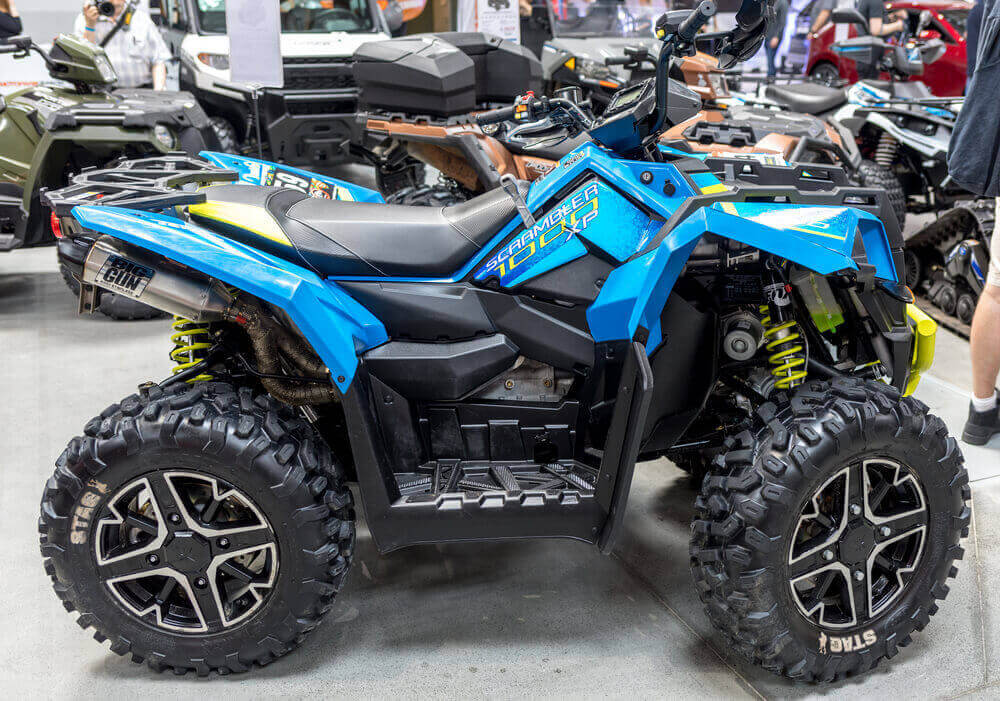When considering the purchase of an ATV, it’s important to weigh the benefits and drawbacks of buying a new versus a used model. New ATVs come with the assurance of being in top condition, often including warranties and the latest features.
However, they tend to have a higher initial price, which may be a concern for budget-conscious buyers. Conversely, used ATVs can be more affordable but could come with the risk of unknown mechanical problems and lack of warranty.
Understanding the pros and cons of buying new vs used ATV of each option is crucial to making an informed decision. Whether you prioritize the price, the vehicle’s condition, or the latest features will ultimately guide your choice.
Additionally, it’s essential to evaluate factors such as legal considerations, maintenance, and resale value to ensure you make a purchase that best suits your needs and preferences.
Key Takeaways
- New ATVs offer the latest features and have warranty protection, but they typically come with a higher price tag.
- Used ATVs often have lower upfront costs but may require more maintenance and lack warranties.
- Evaluating factors like cost, condition, and legal considerations are crucial in making an informed decision between new and used ATVs.
The Pros And Cons Of Buying New Vs Used ATV
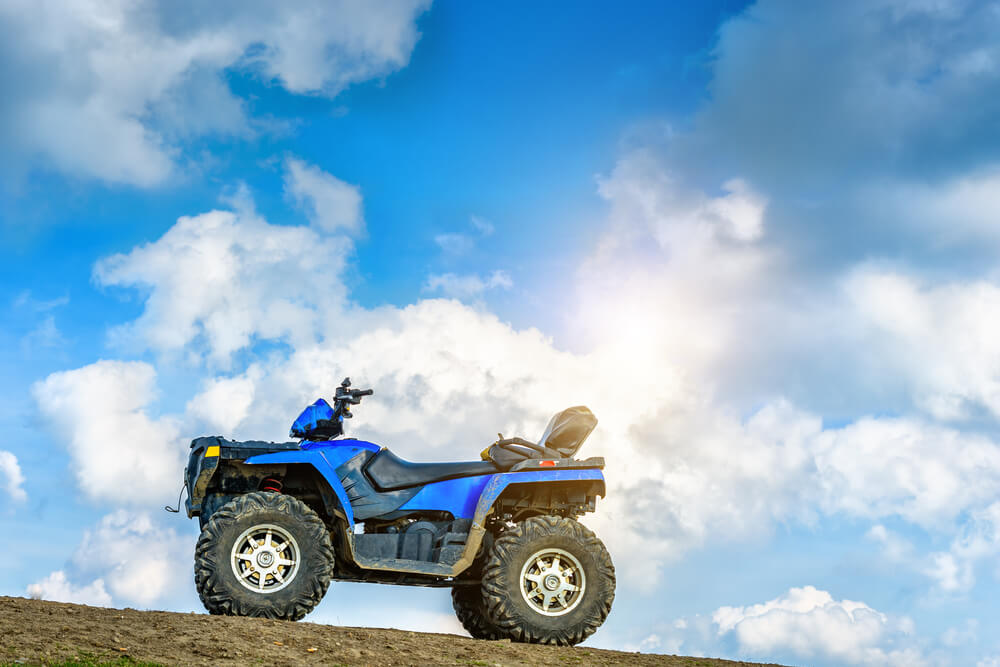
What Are ATVs?
ATVs, or All-Terrain Vehicles, are off-road vehicles designed for recreation, outdoor activities, and sometimes work-related tasks. These versatile vehicles can handle various types of terrain, making them popular among outdoor enthusiasts.
ATVs generally have four large, low-pressure tires, a straddle seating position, and handlebars for steering. Their compact size and capability make them suitable for traversing rough terrain that may be difficult for larger vehicles.
ATV Types
When deciding whether to buy a new or used ATV, it’s essential to understand the different types of ATVs available:
1. Sport ATVs: Sport ATVs are designed for performance, speed, and agility. They have powerful engines, lightweight construction, and suspension systems that can handle jumps and high-speed cornering. If you’re into racing, jumping, or exploring rugged trails, a sports ATV might be perfect for your needs.
2. Utility ATVs: These ATVs are built for work and more practical applications, such as farming, hunting, and hauling loads. Utility ATVs are generally larger and more robust than sport ATVs. They have strong engines, cargo racks, and sometimes even towing capabilities. If you need an ATV for tasks like plowing snow or hauling firewood, a utility ATV might be a better fit.
3. Side-by-side UTVs: While not technically ATVs, side-by-side UTVs (Utility Task Vehicles) are worth mentioning. They have a side-by-side seating arrangement, making them more suitable for multiple passengers.
UTVs are versatile, with both utility and recreational capabilities and often come with additional features like roll cages and seat belts for added safety.
Now that you have some basic knowledge of ATVs and their types, you can make a more informed decision when choosing between a new or used ATV. To weigh the pros and cons of buying new vs. used, consider factors such as the latest technology, warranty, and overall condition of the vehicle.
Remember to always prioritize safety and make sure the ATV meets your specific needs and preferences.
New ATVs
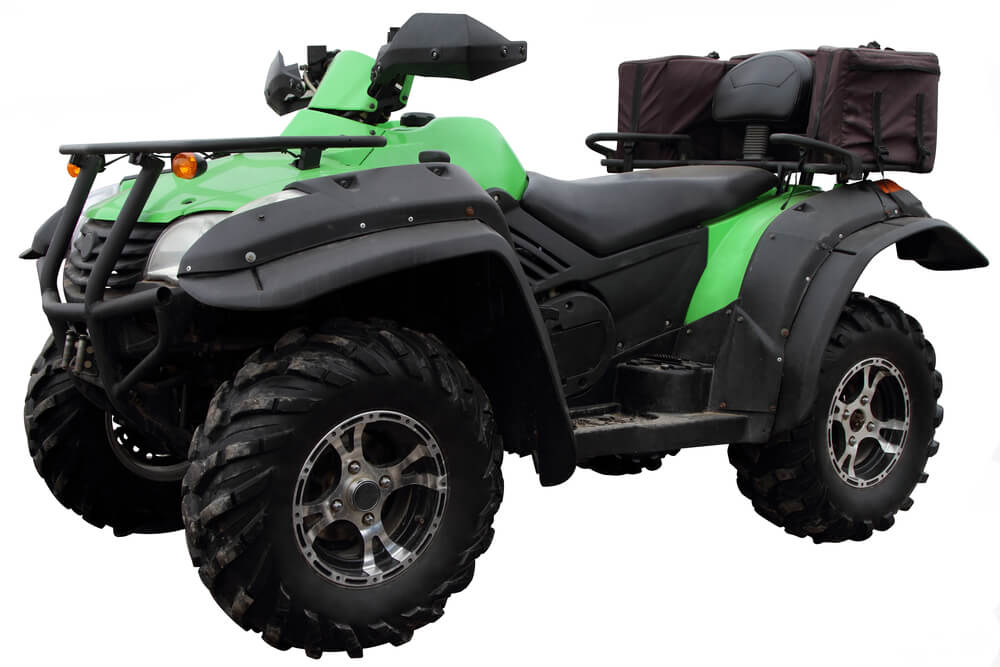
Advantages of New ATVs
When you opt to purchase a new ATV, you receive several benefits. First and foremost, new ATVs offer the latest technology. These cutting-edge advancements enhance performance, comfort, and safety, which may be lacking in older models.
Additionally, new ATVs come with a manufacturer’s warranty. This warranty provides protection against mechanical issues or defects that may arise during the warranty period.
Buying a new ATV also guarantees that the vehicle is in brand-new condition. This means you’ll have peace of mind knowing that the ATV hasn’t been exposed to significant wear and tear prior to your ownership.
Disadvantages of New ATVs
It’s important to consider the drawbacks of purchasing a new ATV as well. One major disadvantage is the higher cost compared to used ATVs. Along with the cost of the vehicle itself, new ATVs typically have higher registration fees, insurance premiums, and taxes.
Another downside is the inevitable depreciation. The value of your new ATV will decrease rapidly as soon as you drive it off the lot. Depending on the specific model and usage, the value of your ATV could decrease by up to 50% within the first couple of years.
Lastly, new ATVs may come with unexpected issues or recalls. While new technology and features can be enticing, they can also bring unforeseen problems that manufacturers may need to address post-release. This can be inconvenient for you as the owner.
Used ATVs

Advantages of Used ATVs
Purchasing a used ATV can be a smart decision, considering the benefits that come with it. One of the main advantages is the lower purchase price compared to a new one.
A smaller upfront investment means you can potentially afford a higher-end model with more features than you would get with a new one for the same price.
In addition to the cost savings, used ATVs have slower depreciation, which means they hold their value better over time. If you decide to sell or upgrade later, you’ll likely not lose as much money compared to a new ATV.
Another advantage is that you may find a used ATV with upgraded parts or accessories that the previous owner has installed. This can save you time and money on aftermarket enhancements, adding value to your purchase.
Disadvantages of Used ATVs
While there are benefits to buying used ATVs, there are also some drawbacks to consider. One major concern is the potential for mechanical issues and hidden problems.
The previous owner’s maintenance habits can significantly impact your future experience with the vehicle, and it may require more repairs and maintenance than a new ATV.
Lack of warranty is another disadvantage for used ATVs. Most manufacturers offer a limited warranty for new vehicles, giving you peace of mind in case of problems early on. With a used ATV, you may only have a limited or no warranty, putting more financial risk on you if issues arise.
Lastly, a used ATV may have older features and not the latest technology advancements. If you’re looking for the newest innovations and performance capabilities, a new ATV may be a better fit for your needs.
Evaluating ATV Condition

When considering a new or used ATV, it’s essential to assess the condition of the vehicle before making a purchase.
This will help ensure you’re making a wise investment and getting the most value for your money.
First, inspect the exterior of the ATV. Look for signs of damage, such as cracks in the plastic body or dents in the metal frame. While some cosmetic damage is expected with used ATVs, excessive wear and tear may indicate poor maintenance or harsh riding conditions.
Next, check the tires. Look for signs of uneven wear, dry rot, or punctures that could cause a flat. Tires with significant wear should be replaced soon after purchase. If the tires appear too worn, you may need to negotiate a lower price or look for another ATV.
Examine the suspension by bouncing the ATV up and down to feel the responsiveness of the shocks. If the suspension feels overly stiff or too soft, it could indicate an issue that requires maintenance.
Inspect the engine by looking for leaks, corrosion, or other signs of damage. Start the ATV and listen for any unusual sounds, such as knocking, grinding, or excessive exhaust noise. You should also check the oil level and color, as well as the coolant if applicable.
Don’t forget to take a test ride. During the ride, pay attention to how the ATV handles, accelerates, and brakes. If you notice anything unusual or uncomfortable, it could suggest a mechanical issue.
To make your evaluation process easier, here’s a checklist of key points to remember:
- Inspect the exterior for signs of damage
- Check the tires for wear and integrity
- Examine the suspension for responsiveness
- Inspect the engine for leaks, corrosion, and unusual sounds
- Take a test ride to evaluate handling, acceleration, and braking
By carefully evaluating the condition of an ATV before you buy, you can make a more informed decision and potentially save yourself from future repair costs and headaches.
Cost Comparison: New Vs Used
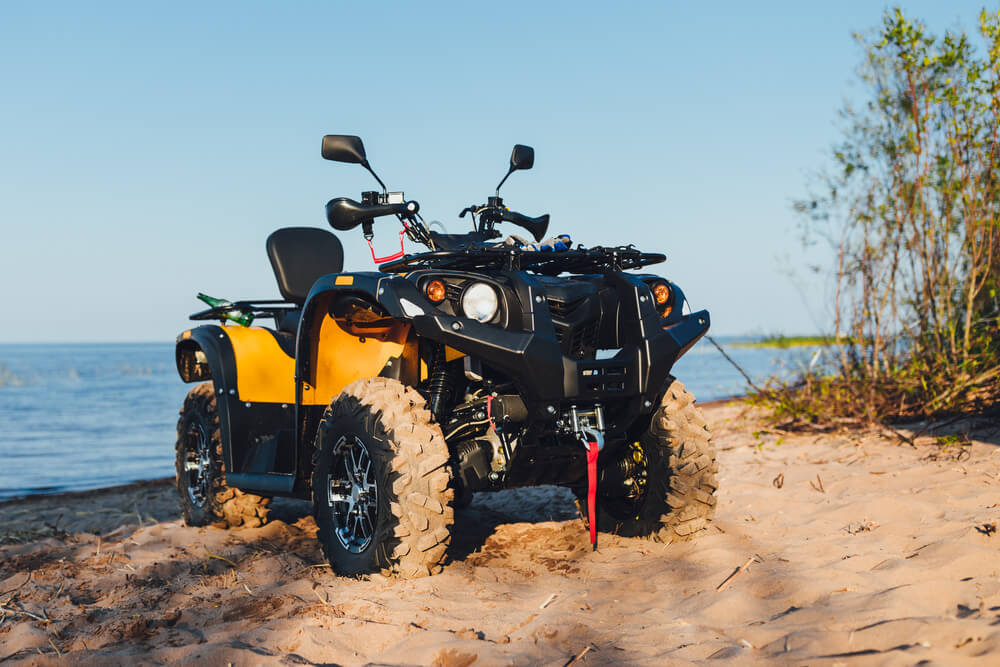
When considering whether to buy a new or used ATV, it’s crucial to understand the cost differences between the two options.
In this section, we will break down the main factors that affect the total cost of ownership for both new and used ATVs, so you can make an informed decision based on your budget and preferences.
Initial Purchase Price: The most obvious difference in cost between new and used ATVs is the initial purchase price. A new ATV will generally cost you more upfront compared to a used one, but you’ll have the advantage of getting the latest features and technology.
On the other hand, you can find a used ATV for a significantly lower price, often with only minor differences in features or performance. A little research can help you narrow down your choices and determine the best fit for your budget.
Depreciation: Another essential factor to consider is depreciation. A new ATV’s value drops significantly the moment you drive it off the lot, whereas used ATVs have already experienced most of their depreciation.
This means that if you decide to sell the ATV later on, a used one will typically retain more of its value, thus providing a better return on investment. Keep in mind that depreciation rates may vary based on factors such as the ATV’s make, model, and condition.
Maintenance Costs: While new ATVs may have more advanced features and technology, they also come with warranty coverage that can save you money on maintenance and repairs.
Used ATVs, on the other hand, may not have any warranty remaining, which means you’ll be responsible for any maintenance and repairs needed. However, if well-maintained, a used ATV can still provide a solid and reliable riding experience.
It’s essential to consider the ATV’s service history, mileage, and overall condition when determining potential maintenance costs.
Insurance and Financing: Insurance rates for new ATVs are typically higher, as they are valued at a higher price. Used ATVs, with their lower initial cost, may have more affordable insurance premiums.
Further, financing a new ATV can often result in lower interest rates and better loan options due to the higher collateral value.
Yet, the lower purchase price of a used ATV means that even with potentially higher interest rates, your overall loan amount and monthly payments may be lower.
By taking into account the initial purchase price, depreciation, maintenance costs, and insurance and financing expenses, you can make an informed decision when comparing the costs of buying a new versus a used ATV.
With a clear understanding of these factors, you’ll be better prepared to choose the right ATV that best suits your needs and budget.
Legal Considerations
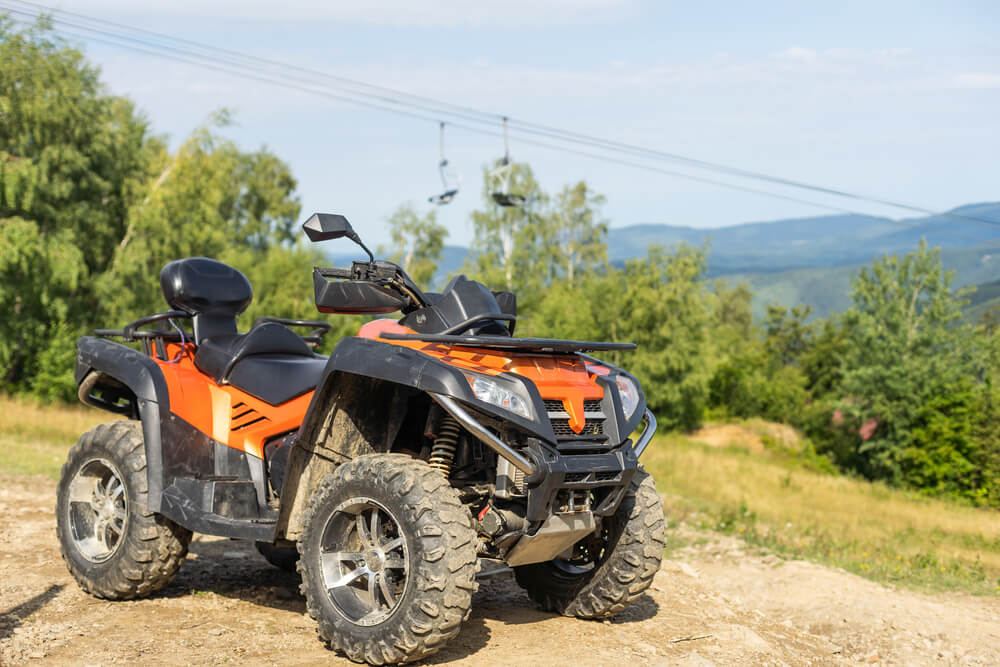
When deciding between a new and used ATV, it’s essential to consider the legal aspects that come with each choice.
In this section, we’ll discuss some key legal considerations that you need to keep in mind.
First, be aware of the warranty coverage that comes with a new ATV. A new ATV typically comes with a manufacturer’s warranty, which can provide you with peace of mind and financial protection in case of mechanical issues or defects.
On the other hand, used ATVs may have a limited warranty or none at all. Before making a purchase, always inquire about the warranty terms and duration to ensure that you’re adequately protected.
Next, consider the title and registration requirements for your ATV. When you purchase a new ATV, the dealer will usually handle the paperwork, including registering the vehicle and obtaining a title in your name.
For used ATVs, you’ll need to ensure that the seller has a clean and clear title to transfer to you. Check the ATV’s Vehicle Identification Number (VIN) to verify its history, and don’t forget to register and title the vehicle in your name upon purchase.
Also, it’s important to stay informed about safety regulations and requirements in your area. Some locations have specific rules regarding the use of ATVs on public land, including helmet laws, age restrictions, and necessary safety courses.
Make sure you’re familiar with the local guidelines and adhere to them while enjoying your ATV.
Lastly, consider the potential for recalls and safety notices. Newer ATVs might be subject to manufacturer recalls due to unforeseen safety issues. It’s essential to be aware of these notices and address them promptly to ensure your ATV remains safe and functional.
Although used ATVs may have had previous recalls addressed, it’s still crucial to check for any outstanding recalls or safety notices.
To summarize, when weighing the pros and cons of buying a new vs. used ATV, keep in mind the legal considerations, including warranty coverage, title and registration, safety regulations, and potential recalls.
Being well-informed and prepared will help you make the best decision for your needs and ensure a safe and enjoyable ATV experience.
Conclusion
When deciding between a new and used ATV, several factors come into play. Ultimately, it depends on your preferences, budget, and intended use.
Purchasing a new ATV offers the benefits of the latest technology, pristine condition, and warranty coverage. You can enjoy a hassle-free experience with a brand-new vehicle that is tailored to your requirements.
Nevertheless, new ATVs come at a higher cost, and they tend to depreciate faster than used ones.
On the other hand, buying a used ATV can provide a more affordable option with slower depreciation rates. This allows you to resell the vehicle closer to your initial investment if you take good care of it.
Nonetheless, used ATVs may require more maintenance and may lack the latest features found in new models.
In summary, take time to assess your needs, conduct thorough research, and consider the financial implications before making a decision.
By weighing the pros and cons, you can find the perfect ATV that fits your lifestyle and budget.
Frequently Asked Questions
What factors should I consider when choosing between new and used ATVs?
When deciding between a new and used ATV, consider factors such as your budget, available sales incentives, intended use for the vehicle, desired features, and reliability. It’s essential to weigh the pros and cons of each option.
A new ATV provides a warranty and the latest technology, while a used one often comes with a lower price and slower depreciation rate.
What are the main maintenance differences between new and used ATVs?
New ATVs generally require less maintenance in the short term as they have new parts and no wear and tear, unlike used ATVs. Used ATVs may need more maintenance, including replacing worn parts and addressing issues from previous usage.
However, proper maintenance and care of a used ATV can help prolong its life and performance.
How does ATV financing differ for new and used models?
Financing options for new and used ATVs may vary depending on the lender and the dealership. Generally, new ATVs have lower interest rates due to manufacturer incentives and a lower risk to the lender.
Used ATVs might have higher interest rates, but their lower upfront cost can make the overall loan manageable.
Is warranty coverage for used ATVs as strong as for new ones?
Warranty coverage for new ATVs is typically more comprehensive, as it generally covers a more extended period and includes various protection levels. Used ATVs may come with a limited warranty, depending mainly on the dealership or seller.
It’s essential to understand the warranty terms for a used ATV and consider purchasing an extended warranty if needed.
What are the potential hidden costs when purchasing a used ATV?
Hidden costs of purchasing a used ATV may include repairs, maintenance, and possible replacement of worn-out parts.
Ensure that you thoroughly inspect and test drive the used ATV to identify any potential issues before purchasing. Always factor in these potential hidden costs when determining your budget for a used ATV.
How can I determine if a used ATV has been well-maintained before buying?
To gauge a used ATV’s maintenance history, ask the seller for records of consistent maintenance and servicing. Inspect the ATV for signs of rust, leaks, or excessive wear. Test drive the vehicle and pay attention to its performance and any unusual noises.
It’s strongly recommended to have a trusted mechanic evaluate the ATV as well.

